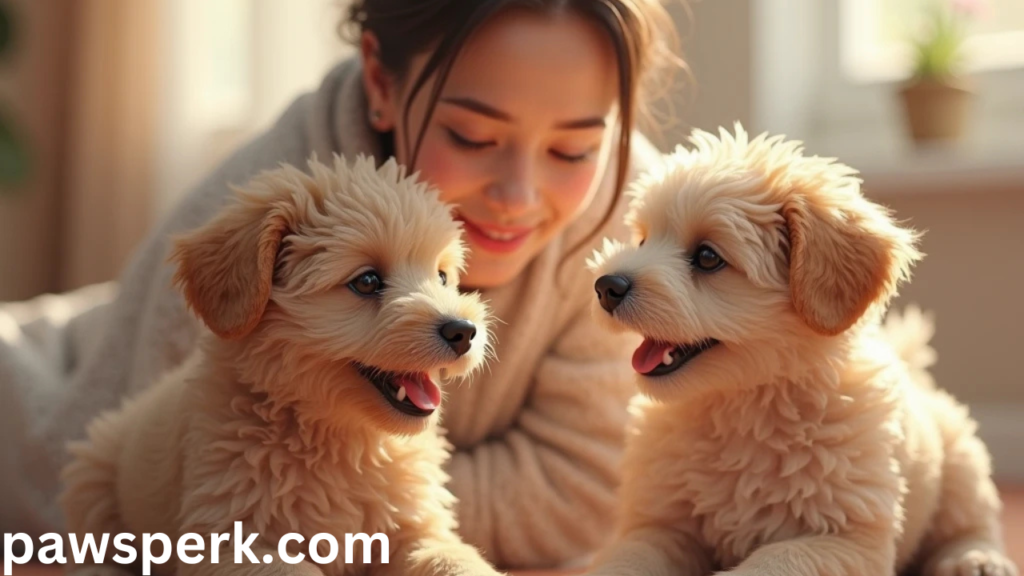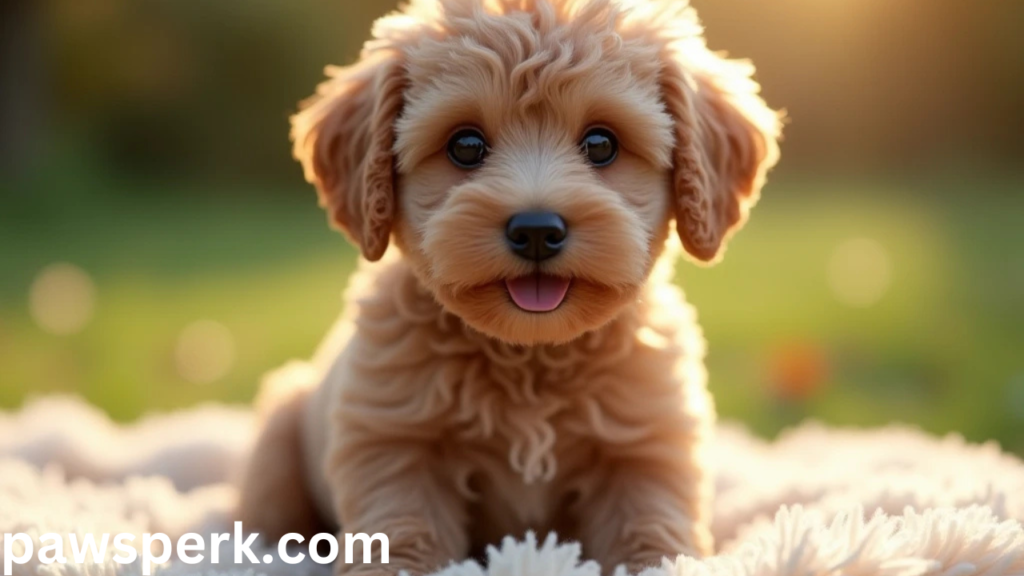Schnoodle puppies are among the most beloved designer dog breeds, capturing the hearts of dog lovers everywhere. Schnoodle puppies, a cross between a Schnauzer and a Poodle, are known for their intelligence, affectionate nature, and low-shedding coats. As Schnoodle puppies continue to grow in popularity, many prospective owners wonder what makes them so special. From their playful personality to their hypoallergenic qualities, Schnoodle puppies are an excellent choice for families and individuals alike. Before bringing home one of these adorable companions, it’s essential to understand their needs and characteristics. Let’s explore everything you need to know about Schnoodle puppies!
What Is a Schnoodle?
A Schnoodle is a hybrid dog breed resulting from crossing a Schnauzer with a Poodle. Depending on the size of the parent breeds, Schnoodles can come in toy, miniature, or standard sizes. This intentional crossbreeding began in the 1980s as part of the designer dog trend, aiming to combine the Poodle’s intelligence and hypoallergenic coat with the Schnauzer’s alertness and spirited personality.
As with most hybrid breeds, first-generation Schnoodles (F1) are direct crosses between purebred Schnauzers and Poodles. Later generations may involve breeding Schnoodles with other Schnoodles (F2) or back to parent breeds, resulting in varying characteristics.
Physical Characteristics
Size and Weight
Schnoodles come in three primary size categories:
- Toy Schnoodle: 6-12 pounds, 10-12 inches tall (Toy Poodle × Miniature Schnauzer)
- Miniature Schnoodle: 13-20 pounds, 12-15 inches tall (Miniature Poodle × Miniature Schnauzer)
- Standard Schnoodle: 20-75 pounds, 15-26 inches tall (Standard Poodle × Standard Schnauzer)
Coat and Colors
One of the Schnoodle’s most appealing features is its soft, often curly coat that comes in various colors and patterns.
- Black
- White
- Gray
- Brown
- Apricot
- Parti-colored (combination of colors)
- Phantom (specific pattern with distinct markings)
Their coats can range from wavy to tightly curled, typically inheriting some degree of the poodle’s low-shedding quality, though this varies by individual.
Temperament and Personality
Schnoodles are known for their winning personalities, often described as:
- Intelligent and trainable
- Affectionate and loyal
- Playful and energetic
- Alert and sometimes protective
- Social with people and other animals when properly socialized
These dogs typically inherit the Poodle’s intelligence and the Schnauzer’s alertness, creating a companion that’s both smart and attentive. Most Schnoodles bond closely with their families and can be excellent with children when properly socialized.
Positive Aspects of Schnoodle Ownership
Hypoallergenic Potential
While no dog is truly 100% hypoallergenic, Schnoodles often inherit the Poodle’s low-shedding coat, making them a better option for allergy sufferers compared to heavy-shedding breeds. Their coats trap loose hair and dander, reducing the amount that circulates in the home.
Adaptability
Schnoodles, particularly the smaller varieties, adapt well to various living situations. They can thrive in apartments, suburban homes, or rural settings, provided they receive adequate exercise and mental stimulation.
Intelligence and Trainability
With two highly intelligent parent breeds, Schnoodles typically excel in training. They learn commands quickly and often enjoy the mental stimulation that comes with training sessions. This makes them suitable for first-time dog owners willing to invest time in consistent training.
Longevity
Smaller Schnoodles generally enjoy longer lifespans, with many living 12–15 years when properly cared for. Even standard-sized Schnoodles typically live 10–13 years, providing families with a long-term companion.
Challenges and Considerations
Grooming Requirements
That adorable, low-shedding coat comes with a trade-off: high maintenance. Schnoodles require regular grooming, including:
- Brushing 3-4 times weekly to prevent matting
- Professional grooming every 6-8 weeks
- Regular ear cleaning to prevent infections
- Dental care to maintain oral health
Without proper grooming, their coats can quickly become matted, leading to skin issues and discomfort.
Exercise Needs
Schnoodles are energetic dogs that require daily exercise. Depending on their size and individual energy levels, they need:
- 30-60 minutes of activity daily
- Mental stimulation through puzzle toys or training
- Regular play sessions
Understimulated Schnoodles may develop behavioral issues like excessive barking or destructive chewing.
Potential Health Issues
Like all breeds, Schnoodles can be prone to certain health conditions, including:
- Inherited from Poodles: Progressive Retinal Atrophy, Sebaceous Adenitis, Hip Dysplasia
- Inherited from Schnauzers: Pancreatitis, Diabetes, Bladder Stones
- Common in both parent breeds: Allergies, Epilepsy, and patella luxation
Responsible breeding practices can minimize these risks, highlighting the importance of selecting a reputable breeder.
Unpredictable Traits
As a hybrid breed, Schnoodles can inherit any combination of traits from their parent breeds. First-generation Schnoodles (F1) in particular may have less predictable characteristics regarding size, coat type, and temperament compared to well-established purebreds.
Finding a Healthy Schnoodle Puppy
When searching for a Schnoodle puppy, consider these important factors:
Reputable Breeders
Look for breeders who:
- Perform health testing on parent dogs
- Allow visits to see the puppies’ living conditions
- Provide health guarantees and medical records
- Show knowledge about both parent breeds
- Don’t breed extremely young or old dogs
Adoption Options
Many Schnoodles and Schnoodle mixes end up in shelters or rescue organizations. Consider adoption as an ethical alternative to purchasing from a breeder.
Red Flags to Avoid
Be wary of:
- Breeders selling puppies significantly below market value
- Those unable or unwilling to show the puppies’ parents
- Sellers refusing to provide health clearances
- Anyone selling puppies younger than 8 weeks old

Caring for Your Schnoodle Puppy
Nutrition
Feed your Schnoodle high-quality dog food appropriate for their:
- Age (puppy, adult, senior)
- Size (toy, miniature, standard)
- Activity level
Portion control is crucial, as Schnoodles can gain weight easily, especially as they age.
Training and Socialization
Start training early and focus on:
- Positive reinforcement methods
- Consistent commands and expectations
- Early socialization with various people, animals, and environments
- Puppy classes for structured learning and socialization
Healthcare
Establish a relationship with a veterinarian and maintain:
- Regular check-ups
- Vaccination schedules
- Parasite prevention
- Dental care
Conclusion
Schnoodle puppies offer a delightful combination of intelligence, affection, and charm. While they require commitment to grooming, exercise, and training, they reward their owners with unwavering loyalty and companionship. Whether you’re drawn to their hypoallergenic qualities, adaptability, or simply their teddy bear appearance, a well-raised Schnoodle can be an excellent addition to many households.
Before bringing home a Schnoodle puppy, ensure you’re prepared for the responsibilities of ownership and committed to providing proper care throughout their life. With the right approach, your Schnoodle can become a beloved family member for many years to come.
FAQs
1. What is a Schnoodle?
A Schnoodle is a designer dog breed that is a mix between a Schnauzer and a Poodle. They are known for their intelligence, hypoallergenic coats, and friendly personalities.
2. Are Schnoodles hypoallergenic?
Yes! Since Schnoodles inherit the low-shedding coat from their Poodle parent, they are often considered hypoallergenic, making them a great choice for allergy sufferers.
3. What is the temperament of a Schnoodle?
Schnoodles are affectionate, playful, and highly intelligent. They love being around their owners, making them great family pets. They can also be protective like Schnauzers and energetic like Poodles.
4. How big do Schnoodles get?
The size of a Schnoodle depends on the size of the Poodle parent (Toy, Miniature, or Standard). Common Schnoodle sizes:
- Toy Schnoodle: 6-10 lbs
- Miniature Schnoodle: 10-20 lbs
- Standard Schnoodle: 30-75 lbs
5. Are Schnoodles easy to train?
Yes! Schnoodles are highly intelligent and eager to please, making them easy to train with positive reinforcement. They excel in obedience training and agility activities.
6. Do Schnoodles need a lot of exercise?
Schnoodles are active dogs and require daily walks and playtime. Mini and Standard Schnoodles need more exercise than Toy Schnoodles.


